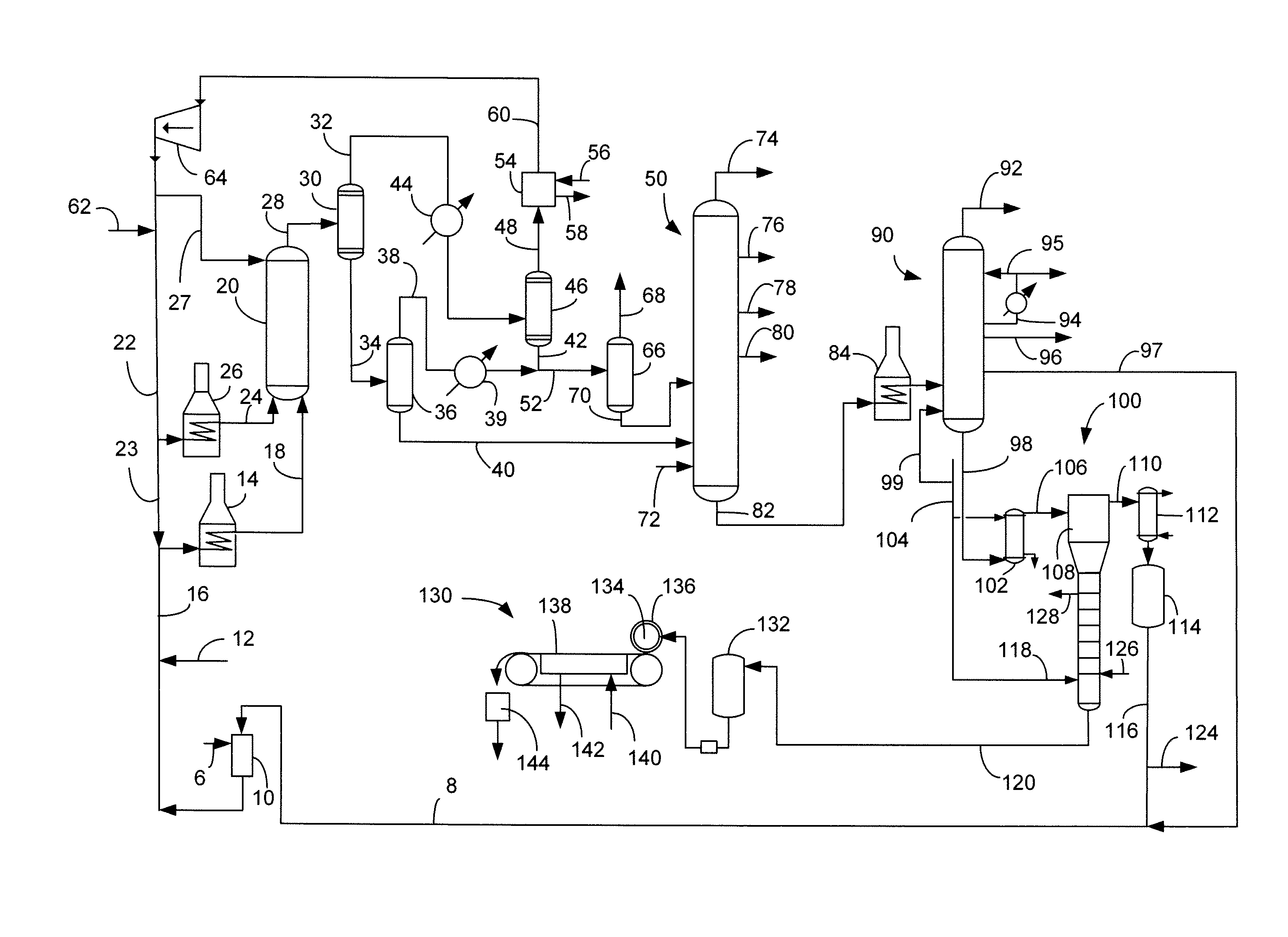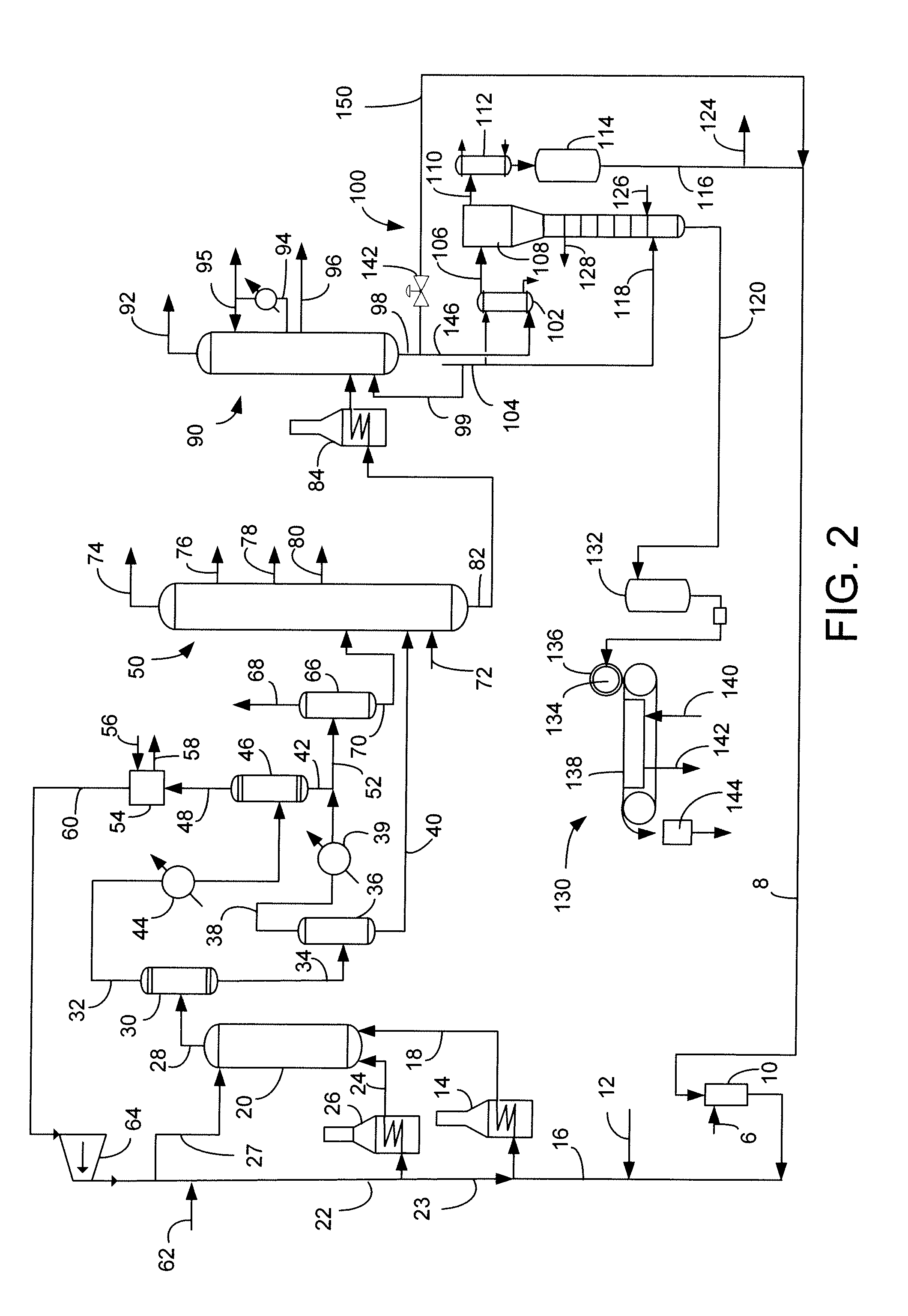Apparatus for Separating Pitch from Slurry Hydrocracked Vacuum Gas Oil
- Summary
- Abstract
- Description
- Claims
- Application Information
AI Technical Summary
Benefits of technology
Problems solved by technology
Method used
Image
Examples
example
[0040]To determine which pitch materials can be solidified and transported 66° C. (150° F.) was taken as a highest temperature to which pitch materials would be exposed during transportation, considering an acceptable safe operating margin. Pitch materials would have to be transportable up to this maximum temperature without beginning to stick together. That is, the onset of softening temperature of the pitch must be greater than 66° C. (150° F.).
[0041]A procedure for using a thermomechanical analyzer (TMA) is similar to a procedure reported for measuring densities of powdered molding polymer by McNally, G. and McCourt, M., DENSITY MEASUREMENT OF THERMOPLASTIC POWDERS DURING HEATING AND COOLING CYCLES USING THERMAL MECHANICAL ANALYSIS, ANTEC 2002 Conference Proceedings, 1956-1960. A TMA Model Q400 from TA Instruments of New Castle, Del. was used to measure the melting onset temperature and the fusion temperature. About 10 mg of hand-ground, unsized pitch powder was introduced in a 7...
PUM
 Login to View More
Login to View More Abstract
Description
Claims
Application Information
 Login to View More
Login to View More - R&D
- Intellectual Property
- Life Sciences
- Materials
- Tech Scout
- Unparalleled Data Quality
- Higher Quality Content
- 60% Fewer Hallucinations
Browse by: Latest US Patents, China's latest patents, Technical Efficacy Thesaurus, Application Domain, Technology Topic, Popular Technical Reports.
© 2025 PatSnap. All rights reserved.Legal|Privacy policy|Modern Slavery Act Transparency Statement|Sitemap|About US| Contact US: help@patsnap.com



